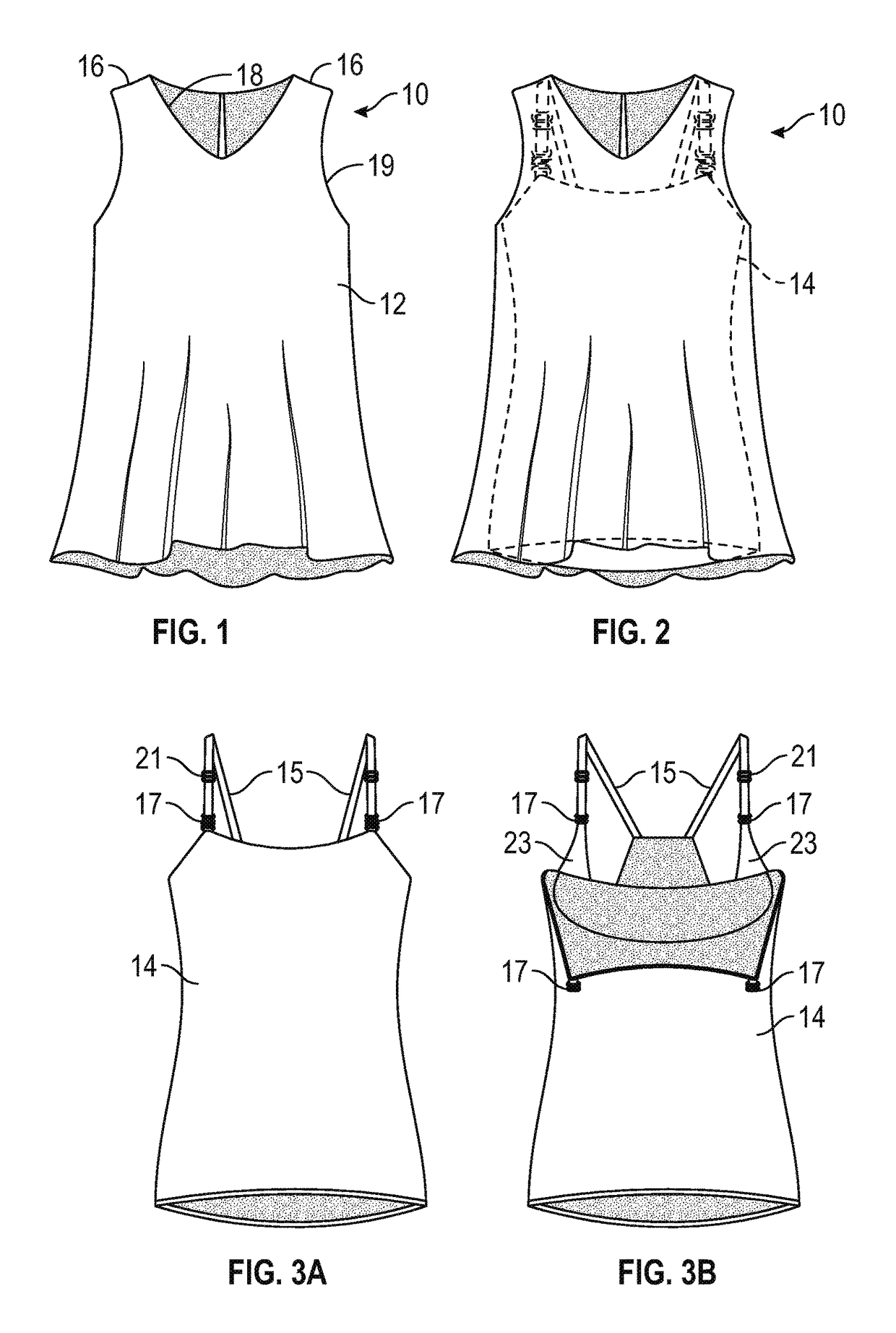Convertible garment for carrying and feeding infants
a technology for carrying and feeding infants, applied in the field of convertible garments for carrying, covering and feeding infants, can solve the problems of uncomfortable for both baby and carrier, breastfeeding mothers also have problems, and the baby carrier devices used by parents to carry babies close to their bodies are subject to several inconveniences, so as to achieve the effect of convenient convertibl
- Summary
- Abstract
- Description
- Claims
- Application Information
AI Technical Summary
Benefits of technology
Problems solved by technology
Method used
Image
Examples
Embodiment Construction
[0035]While certain embodiments are described, these embodiments are presented by way of example only, and are not intended to limit the scope of protection. The methods and systems described herein may be embodied in a variety of other forms. Furthermore, various omissions, substitutions, and changes in the form of the example methods and systems described herein may be made without departing from the scope of protection.
[0036]According to various embodiments, an article of clothing or garment configured for wearing over at least an upper portion of a wearer's body is convertible between a carrier mode for carrying a baby or other animate or inanimate objects such as pets, shopping items or the like, and a cover mode for normal wear and for feeding a baby in a concealed manner. The garment is configured to fuse critical functions of carry, cover and feed into one construction to allow the wearer to move seamlessly and discretely from feeding to carrying a baby, or other similarly w...
PUM
 Login to View More
Login to View More Abstract
Description
Claims
Application Information
 Login to View More
Login to View More - R&D
- Intellectual Property
- Life Sciences
- Materials
- Tech Scout
- Unparalleled Data Quality
- Higher Quality Content
- 60% Fewer Hallucinations
Browse by: Latest US Patents, China's latest patents, Technical Efficacy Thesaurus, Application Domain, Technology Topic, Popular Technical Reports.
© 2025 PatSnap. All rights reserved.Legal|Privacy policy|Modern Slavery Act Transparency Statement|Sitemap|About US| Contact US: help@patsnap.com



